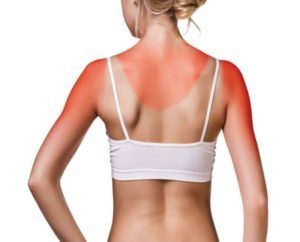
HEALTH NEWS
Even a single sunburn can increase a person’s risk of skin cancer. This is because when the skin absorbs ultraviolet radiation from sunlight, it can damage the genetic material in skin cells.
In the short term, this damage can cause sunburns.
In the long term, it builds up and raises the risk of skin cancer.
“This is a situation where if you get a few sunburns, that increases your risk of skin cancer a little. If you get lots of sunburns, that can increase your risk of skin cancer a lot,” Weinstock explained.
“One sunburn can make a difference, but it’s not as big a difference as if you have many sunburns,” he added.
Even if you never get burned, exposure to sunlight can damage your skin cells and increase your chances of developing skin cancer.
“It’s not the burn itself that affects the skin cancer risk, it’s the sun exposure that’s associated with that burn,” Weinstock said.
“The ultraviolet radiation that’s absorbed by the skin is what raises the risk,” he continued. “If you get a little bit, you may not get a burn. You may not get anything that feels painful at all, but you still have some damage that’s being accumulated.”
Early exposure is dangerous
Sunlight exposure can damage your skin cells and increase your skin cancer risk at any age.
But earlier exposure may be particularly dangerous.
For example, one study published by the American Association for Cancer Research found that sunburns earlier in life were linked to higher risk of melanoma skin cancer.
Women who experienced at least five blistering sunburns when they were 15 to 20 years old were 80 percent more likely than others to develop melanoma skin cancer later on.
“Early exposures in general are of greater concern than exposures later in life, because you have a longer period of time in which to get additional insults to your cells that can ultimately result in skin cancer or other adverse consequences,” Weinstock explained.
That’s why it’s important for parents to take steps to protect their children from the sun, as well as themselves.
“Sunscreen with SPF 30 or greater and clothing with a tight weave will give you good protection for the areas that are covered,” Weinstock said.
“Sunscreen typically needs to be reapplied after you’re outside for a few hours or if you towel-dry after swimming,” he continued. “It generally sits on the surface of the skin, so if you’re swimming and then you use a towel to dry off, you need to put on more.”
Seeking shade under a shelter, umbrella, or tree can also help protect you from the sun.
Weinstock also emphasizes the importance of avoiding indoor tanning beds, which can damage skin cells and raise the risk of skin cancer, too.
He notes that many states have passed laws to prevent children under the age of 18 from using commercial tanning beds.
“My understanding is that New York state will be the 18th,” he added. “I don’t think that’s been signed into law yet, but we anticipate it will be.”
Skin cancer kills thousands of Americans
Currently, skin cancer is the most common type of cancer in the United States.
Most people with skin cancer have basal cell or squamous cell cancers, which tend to be very curable but expensive to treat.
Other people develop melanoma skin cancer, which is responsible for most skin cancer-related deaths.
In 2018, the American Cancer Society estimates 91,270 people in the United States will develop melanoma skin cancer, and 9,320 people will die from it.
If you develop any new growths, patches, spots, or sores on your skin that don’t heal within several weeks, consider making an appointment with your doctor.
Similarly, watch out for changes in the color, shape, or size of any existing moles or other growths on your skin.
In some cases, new growths or changes to existing growths may be a sign of skin cancer.
Checking for signs of skin cancer can be annoying. But early diagnosis and treatment can mean the difference between life and death.
Despite the risk of skin cancer, staying safe doesn’t mean being a hermit during the summer months. Using the slip-slop-slap method can help keep you safe even as you enjoy the sun.

